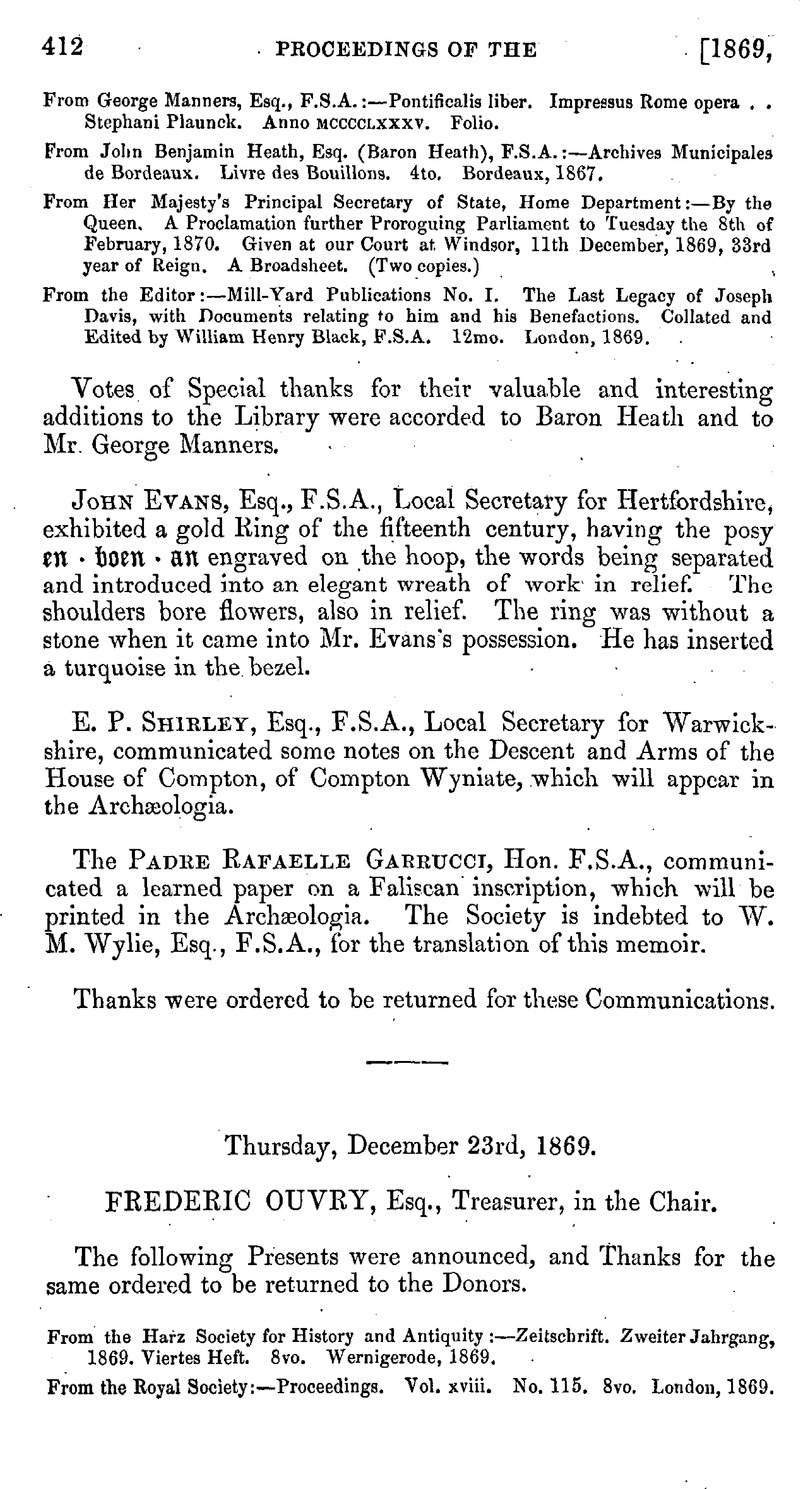No CrossRef data available.
Article contents
Thursday, December 23rd, 1869
Published online by Cambridge University Press: 10 May 2010
Abstract

- Type
- Proceedings
- Information
- Copyright
- Copyright © The Society of Antiquaries of London 1870
References
page 414 note * De Præsulibus Angliæ Comment, p. 106.
page 414 note † The passage does not occur in the Arundel Manuscript No. vii. See Mr. Riley's Edition of Walsingham, ii. 355.
page 415 note * Rymer, Fœdera, ii, 873.
page 415 note † Notice sur les Confessionnaux ; par M. L'Abbé Barraud. 8vo. Caen, 1868. [Extrait du Bulletin Monum. 1868.]
page 415 note ‡ Labbe, Concilia, xv. 262, 466, 1135. Instructions deSt. Charles Borrom., p. 96.
page 416 note * Pommeraye Concilia Rothomagens., p. 444. Bessin Concilia Normannise, p. ii. p. 121.
page 416 note † Bessin Concilia, Rotom. Provinciæ, p. ii. p. 360.
page 416 note ‡ Id. ibid. p. 513.
page 416 note § So far as I remember, it was at Goupillières.
page 416 note ‖ Congrès Archéol. de France. Séances générates tenues à Strasbourg 1859, p. 399.
page 418 note * Grose. Antiquities of Ireland, ii, pp. 40 and 86, being descriptions of cells in the churches of Aghaboe, and Hore Abbey, which Grose considered to be Confessionals.
page 418 note † Instructions de Charles Borromée, p. 96.
page 418 note ‡ At Icklingham St. James, near Mildenhall, in Suffolk, there was in the thickness of the wall, not far from the centre of the north side of the chancel, a stone bench, in an arched and coved recess outside the church; and at a height above the seat, equal about to the level of a man's mouth when seated, was a square aperture looking into the church. This recess is now stopped up. Traces of foundations outside the church seemed to indicate that at some time the recess was inclosed within some building. [Information of C. E. Gibbs, Esq., through the Rev.W. Cooke, F.S.A.]—C.S.P.




